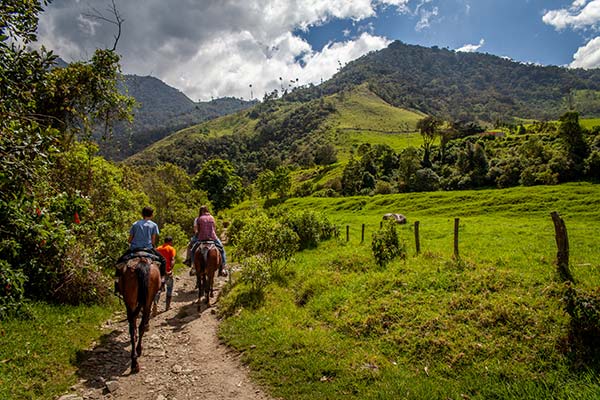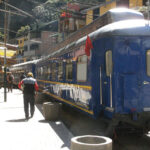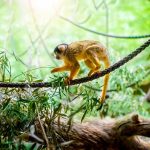The Colombian Lost City – Ciudad Perdida
Few treks take you from the vibrant Caribbean beaches high into the lush, green cloud-forest mountains like the Camino al Ciudad Perdida does. South America has its fair share of spectacular trekking options. These are often along the incredibly varied terrain of the Andes, casually and impressively dotted with volcanoes, glaciers, forests, lakes, even desserts and vast highland plains. They usually have that common requirement of serious winter kit- a sub zero sleeping bag and extra thick gloves though. This one is different. This is the Lost City Trek.
Starting the Lost City Trek
Equipped with just a thin t-shirt, shorts, flip-flops, a healthy layer of sunscreen and plenty of water, we set off from our hotel to meet our fellow adventurous hikers at 5:30am, down a colourful, picture-perfect, colonial street of Santa Marta, on the Caribbean northern coast of Colombia. While waiting for others to arrive (not everyone works on Swiss time around here!), I couldn’t help but take a quick stroll along the beach, dip my toes in the clear waters while sipping on a tinto and watching the last of the night’s party-goers half stumble, half salsa their way home. It’s such a stark contrast to how I am used to begin a trek, high up in some Andean mountain village, likely at minus 5 or 10 degrees, forcing down the coca-filled mates to warm up, with the only signs of life being the shiver of a trusty porter loading his mule for the day. Both have their charm, but I think I might have a new favourite…
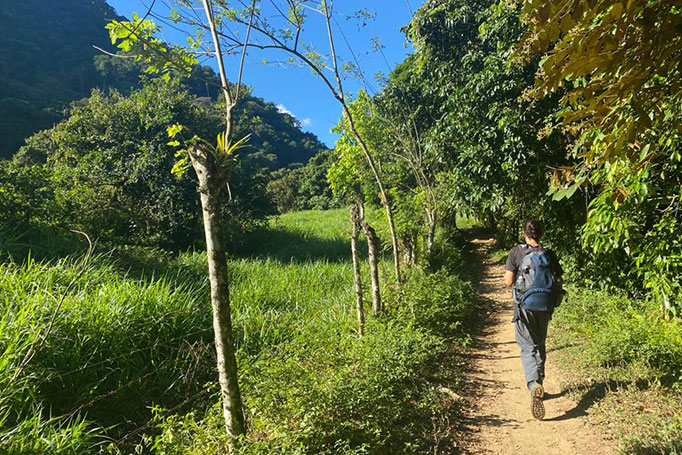
The jeeps had been loaded, our group packed into the back of them, windows wide open as the temperature was rapidly rising and we were on our way, leaving the awakening city behind as the market streets were once again buzzing with life. I got a spot in the Jeep with our leading guide, Magali, who begins to tell a few of us of some of the struggles of the people of Sierra Nevada, the National Park that will be our trekking ground over the coming days.
Each foreign party that enters the Sierra Nevada NP, must be accompanied by a local guide. These guides come from one of four indigenous groups of this region- the Kogi ,Wiwa, Kankuamo and the Archuaco. Each community, of each group, has adopted modern ways of life to different extents, but almost all still firmly believe that Sierra Nevada is the beating heart of the world, and if the ecological equilibrium is knocked out of balance here, then the same will happen everywhere else on the planet. These communities have seen much destruction and damage of their region, rivers running dry, ice caps melting, species disappear and crops destroyed. Continual exploitation through mining as well as heavy drug production in the 1970s to 1990s is most likely to blame for the decline, but the communities have a deep commitment to restoring the balance through ritual practices and daily meditations.
Today a number of NGO’s are attempting to help the communities protect the Sierra Nevada from mining and cocaine production and since Colombia’s significant reopening to tourism in the last decade, this relatively new industry has also been able to provide a considerable alternative to the illicit and damaging previous opportunities. Magali tells us that there is now zero cocaine production in the Sierra Nevada area and no cartel presence while more than 500 families are now supported by tourism alone. The ancient Lost City, built around 800 CE was only re-discovered in 1973 and with Colombia’s rep of the 1980s to early 2000s, it is only recently that travellers have started arriving in this part of the country in large numbers.
We drive along the coast, through a few villages, straight East for about an hour, the morning breeze blazing through the open sides of the jeep with many glimpses of beautiful turquoise waters on our left. Carlitos, Magali’s son is asleep on the bench next to us, he’s getting a lift back to their house while his mum will be taking us up into the mountains and to the Lost City. From the entrance to the park, the 4×4 traction of the jeeps come into their own, they drag us straight up the mountains for maybe an hour, along dusty sunbaked tracks, until we reach El Mamey, or as it’s known locally, Machete Pelao.
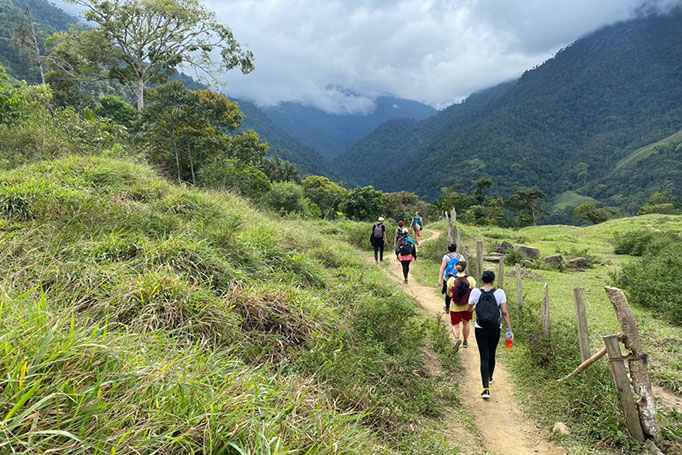
El Mamey is the closest village to the Lost City, reachable by road. Small, slow-paced and quaint, but simmering with excitement as the various groups of mainly backpackers line the village’s single street outside small eateries and living-room shop fronts. Magali organises a lovely calorie-packed lunch of fried fish and beans for us, and we re-pack our bags, apply an extra layer of sun-block and eagerly await her signal to depart. It may be early 2020, but somehow I feel that I’m in the Aguas Calientes of Colombia’s Machu Picchu, some 40 years ago before it became as crowded and efficient as it is today- Machu Picchu, that is.
After a quick briefing, reminders of hats, plenty of water, sticking together etc, we start the sharp incline. We’re a relatively fit group, and the initial pace is good. The Lost City Trek is not considered a high altitude trek, it starts at 140 metres above sea level and reaches a maximum of 1200m, about 45km spread over 4-5 days. However, there are many ups and downs in between, and the sweltering heat can be a challenge for some. Likewise the trail can be very slippery, has many steep steps and depending on rainfall, it can be necessary to cross rivers, waist deep.
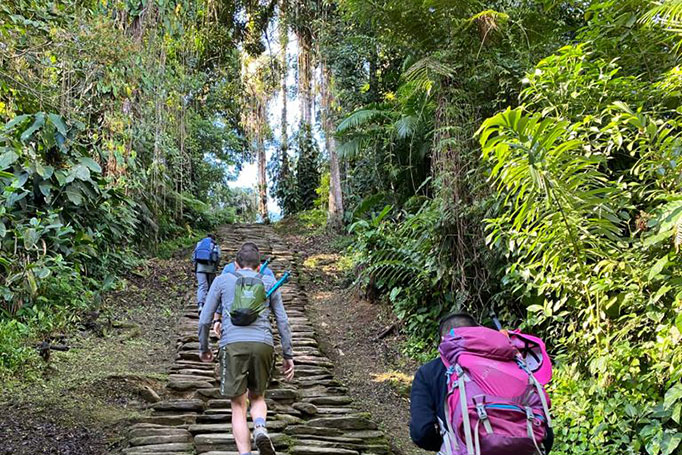
Over the next few days, as we wind our way through increasingly green landscapes as we ascend towards our goal, which was as impressive as I had hoped, the importance and impact of a relatively small number of tourists that come here becomes clearer. This is not just a barren track to an archeological site or stunning viewpoint, this is a fascinating track through the daily life of dozens of communities and a chance to walk past or through an incredibly proud and protected; albeit struggling civilization. Magali, who grew up here herself, explains how each family would have been forced to live off coca production here until recently, under horrendous cartel conditions, as there were no alternatives.
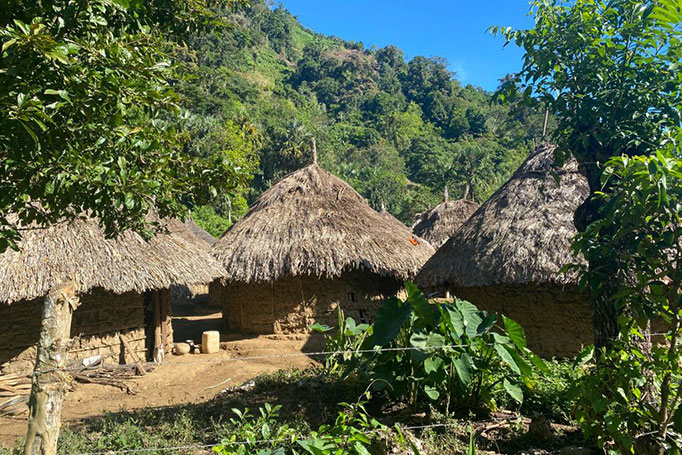
As we move onwards small wooden stalls are now set up with incredibly fresh orange juice, juicy and sweet slices of watermelon and pineapple, bananas and even their own chocolate. Others have set up small stations to show how their clothing, bags and instruments are made from plants of the forest, how natural dyes are made from flowers and roots. The thing that delighted me the most, was that no one here sells Snickers and Twix, Coca Cola or Gatorade. Let’s hope it stays his way.
Accommodation on the Lost City Trek
Despite the trail being relatively underdeveloped, at least compared with the Inca Trek, the trails of El Chalten or Torres del Paine, I was incredibly impressed with the standard of the campsites on the route to the Lost City. As a group (or travel operator) you do not bring your own food, nor your own equipment, tents, hammocks or even cutlery. Likewise you do not bring a cook. Instead, the tour operators and local government, together with the local communities, have agreed that everything is organised by the local communities, obviously with a little help from the operators on what standards are expected.
Campsites here are not just fields with some porterloos, but solid wooden buildings with surprisingly comfortable bunk beds and hammock spaces. Each campsite has refreshing cold showers to cool down after a hot day’s hiking, and each campsite has a well functioning eating hall, a small shop and evening electricity (generator run). A kitchen team of cooks, cleaners and servers cater to all who arrive at the campsite each day through coordination with the tour operators.
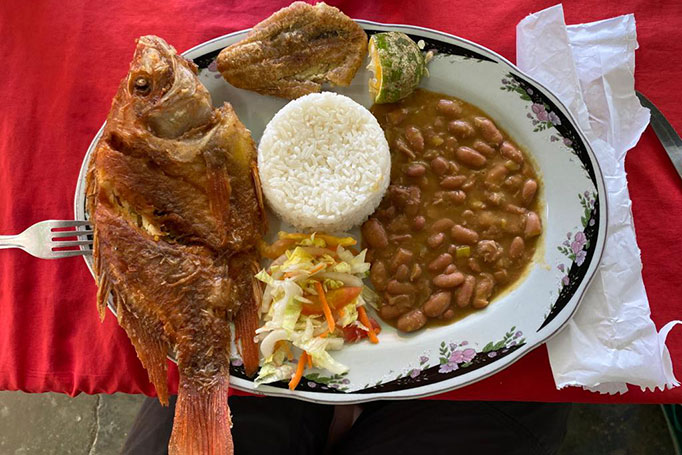
A great example of Sustainable Tourism?
This here, is a great example of sustainable tourism. How the local community has come together and developed something to show the world, but where they also benefit themselves. Tourism is supposed to positively affect local communities.
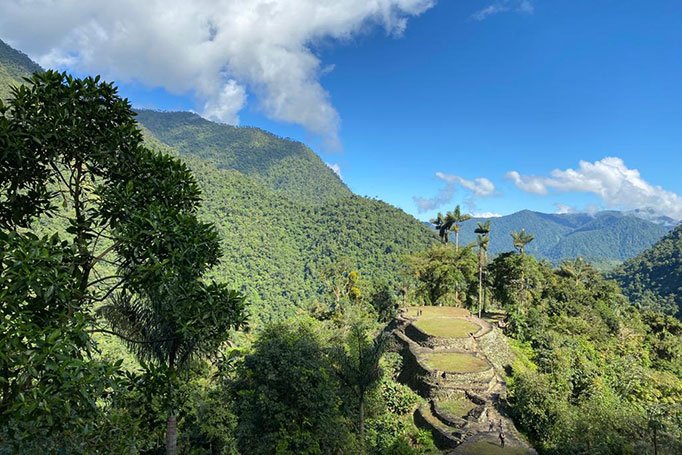
Colombia is a stunning country. It has some of the friendliest and most amazing people you will ever meet as a traveller. However it also has a painful past, and while it is important to understand a country’s history, no matter how bleak, there are too many examples of tourism focusing on that dark past in Colombia, rather than remind the adventurous and exploring traveller of just how much positive effect tourism can have, both for the visitor and the visited. I think it’s wonderful that the people of Sierra Nevada have embraced this idea. I sincerely hope that they can keep this up, also as they naturally will have to tackle the issues that come through an increasing popularity and larger numbers of visitors.
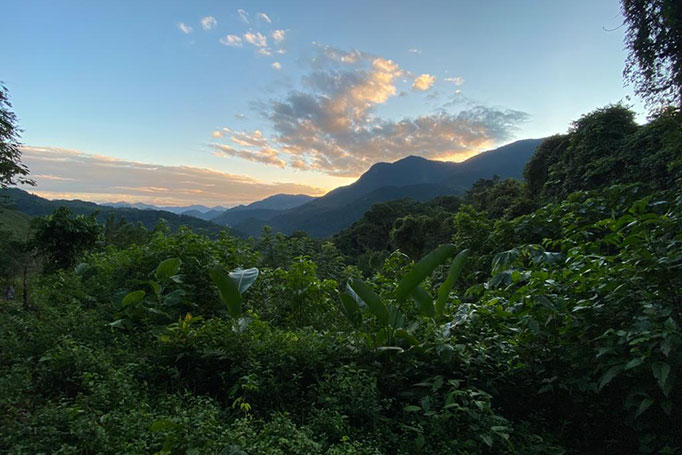
Spread the love
